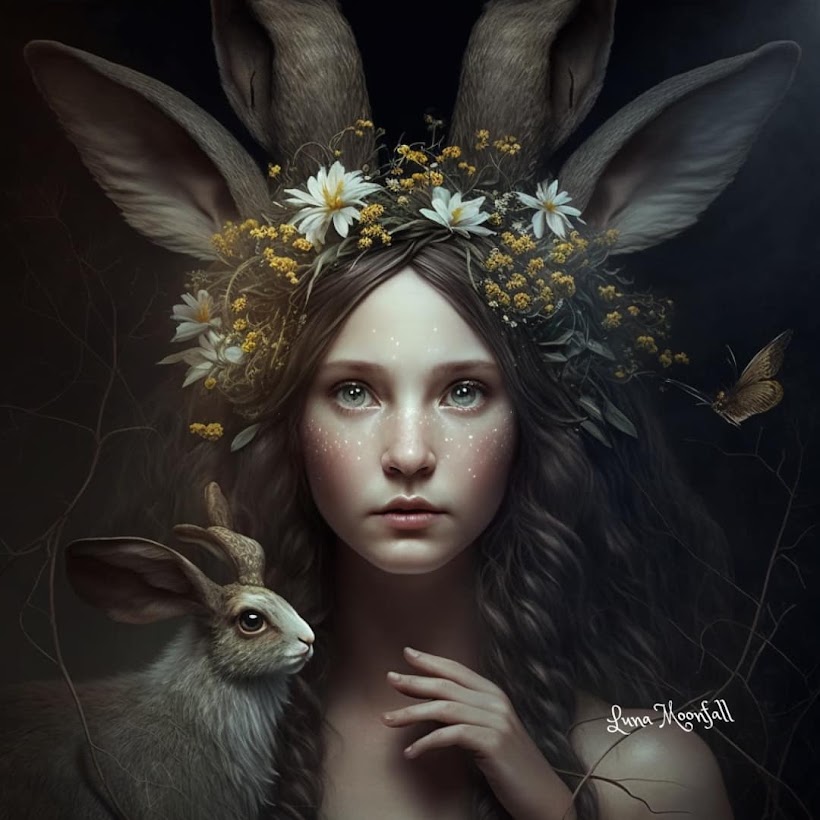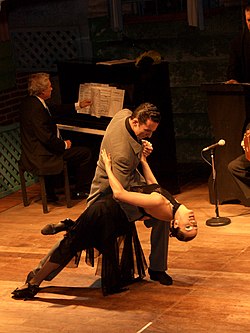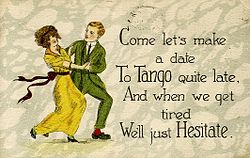

Hello. I'm writer Antoinette Beard/Sorelle Sucere. Welcome to my blog, which is dedicated to all the loving, intelligent, brave, wise, strong, gentle, kind, sweet-and-geeky, humble-and-patient, --- whether they have hands, paws, hooves, wings, fins, or even, --- yes, flippers, --- and to all eager readers and hard-working authors, everywhere.
Meanwhile...

I love all creatures. I consider them, all of them, to be sentient beings... I write thrillers, fantasy, mysteries, gothic horror, romantic adventure, occult, Noir, westerns and various types of short stories. I also re-tell traditional folk tales and make old fairy tales carefully cracked. I'm often awake very early in the morning. A cuppa, and fifteen minutes later I'm usually writing something. ;)
Monday, July 31, 2017
Sunday, July 30, 2017
Friday, July 28, 2017
The Mask of Zorro, --- "Something a little more robust..."
... The super-tango of Katherine Zeta-Jones & Antonio Banderas. Or, is it a volta???
Thursday, July 27, 2017
Ooo!!!... The History Of That Most Sexy Dance, --- The Tango...
Tango is a dance that has influences from African and European culture.[5] Dances from the candombe ceremonies of former slave peoples helped shape the modern day Tango. The dance originated in lower-class districts of Buenos Aires and Montevideo. The music derived from the fusion of various forms of music from Europe.[6] The word "tango" and "tambo" around the River Plata basin were initially used to refer to musical gatherings of slaves, with written records of colonial authorities attempting to ban such gatherings as early as 1789.[7]
Initially, it was just one of the many dances, but it soon became popular throughout society, as theatres and street barrel organs spread it from the suburbs to the working-class slums, which were packed with hundreds of thousands of European immigrants.[8]
In the early years of the 20th century, dancers and orchestras from Buenos Aires travelled to Europe, and the first European tango craze took place in Paris, soon followed by London, Berlin, and other capitals. Towards the end of 1913 it hit New York City in the US, and Finland. In the US, around 1911, the word "tango" was often applied to dances in a 2
4 or 4
4 rhythm such as the one-step. The term was fashionable and did not indicate that tango steps would be used in the dance, although they might be. Tango music was sometimes played, but at a rather fast tempo. Instructors of the period would sometimes refer to this as a "North American tango", versus the so-called "Argentine Tango". By 1914, more authentic tango stylings were soon developed,[which?] along with some variations like Albert Newman's "Minuet" tango.
4 or 4
4 rhythm such as the one-step. The term was fashionable and did not indicate that tango steps would be used in the dance, although they might be. Tango music was sometimes played, but at a rather fast tempo. Instructors of the period would sometimes refer to this as a "North American tango", versus the so-called "Argentine Tango". By 1914, more authentic tango stylings were soon developed,[which?] along with some variations like Albert Newman's "Minuet" tango.
In Argentina, the onset in 1929 of the Great Depression, and restrictions introduced after the overthrow of the Hipólito Yrigoyengovernment in 1930, caused tango to decline. Its fortunes were reversed as tango became widely fashionable and a matter of national pride under the government of Juan Perón. Tango declined again in the 1950s, as a result of economic depression and the banning of public gatherings by the military dictatorships; male-only Tango practice—the custom at the time—was considered "public gathering". That, indirectly, boosted the popularity of rock and roll because, unlike Tango, it did not require such gatherings.[9]
In 2009, the tango was added to the UNESCO Intangible Cultural Heritage Lists.[10]
Styles

Choreographed stage tango in Buenos Aires

World tango dance tournament in Buenos Aires
The tango consists of a variety of styles that developed in different regions and eras of Argentina as well as in other locations around the world. The dance developed in response to many cultural elements, such as the crowding of the venue and even the fashions in clothing. The styles are mostly danced in either open embrace, where lead and follow have space between their bodies, or close embrace, where the lead and follow connect either chest-to-chest (Argentine tango) or in the upper thigh, hip area (American and International tango).
Different styles of Tango are:
- Tango Vals
- Tango argentino
- Tango canyengue
- Tango Oriental Uruguayan tango
- Tango liso
- Tango salon
- Tango orillero
- Tango camacupense (Angola)
- Tango milonguero (Tango apilado)
- Tango Nuevo (New Tango)
- Contact tango
- Show Tango (also known as fantasia)
- Ballroom tango
- Finnish tango
These are danced to several types of music:
- Tango
- Electronic tango-inspired music
- "Alternative tango", i.e. music that is an alternative to tango, or non-tango music employed for use in tango-inspired dance
The milonguero style is characterized by a very close embrace, small steps, and syncopated rhythmic footwork. It is based on the petitero or caquero style of the crowded downtown clubs of the '50s.
In contrast, the tango that originated in the family clubs of the suburban neighborhoods (Villa Urquiza/Devoto/Avellaneda etc.) emphasizes long elegant steps, and complex figures. In this case the embrace may be allowed to open briefly, to permit execution of the complex footwork.
The complex figures of this style became the basis for a theatrical performance style of tango seen in the touring stage shows. For stage purposes, the embrace is often very open, and the complex footwork is augmented with gymnastic lifts, kicks, and drops.
A newer style sometimes called tango nuevo or "new tango", has been popularized in recent years by a younger generation of dancers. The embrace is often quite open and very elastic, permitting the leader to lead a large variety of very complex figures. This style is often associated with those who enjoy dancing to jazz- and techno-tinged "alternative tango" music, in addition to traditional tango
Isabel Allende: How To Live Passionately, --- No Matter What Your Age...
SHE IS MY FAVORITE AUTHOR!!!... I JUST love her!!!... Listen to her... Isn't she TERRIFIC???
Wednesday, July 26, 2017
Thursday, July 20, 2017
A Little Girl Gives Coins To A Street Musician And Gets The Best Surprise...
...Just sensational!!!
Tuesday, July 18, 2017
Tale Inn, Amazing Tiny Cottage in Alabama, A Sweet Little Southern Style...
Oh, - WoW!!!... Love IT!!!
Smiling Pit Bull Loves His New Family So Much!!!...
He's positively adorable with that goofy smile, - just a big moosh!!!
Sunday, July 16, 2017
Thursday, July 13, 2017
What About That "Captain Morgan" Rum???...
Seagram CEO Samuel Bronfman purchased a distillery named Long Pond from the Jamaican government. Among the buyers of raw rum from the Long Pond distillery was a Kingston pharmacy named Levy Brothers. The Levy family had been purchasing raw rum, adding medicinal herbs and spices, aging, and bottling it. Bronfman liked the rum product and bought the rights to it.
In the 1950s the governments of both the United States and its Puerto Rico commonwealth territory instituted a number of job creation programs in Puerto Rico. Taxes on rum entering the contiguous 48 states from Puerto Rico were made lower than those on rum coming from foreign countries. At this time both Seagram's and the Bacardi family built large new plants near San Juan. In 1985, Seagramssold its rum distillery and manufacturing facilities in Camuy and Arecibo—and doing business as Puerto Rican Destillers—to Destilería Serrallés, a Puerto Rican concern that had been producing the Don Q brand in Puerto Rico since 1865. As part of the contract Seagrams also licensed to Serralles the rights to produce and distribute the "Captain Morgan" brand in Puerto Rico and the rest of the Caribbean until 2012.
In 2001, Seagrams sold the "Captain Morgan" brand to Diageo. Diageo made an announcement on 24 June 2008, that it intends to build and operate a new rum distillery on St. Croix, Virgin Islands beginning in 2010 and to source from it beginning at the end of their current supply contract in 2012.
In 1984, Captain Morgan Original Spiced Rum was introduced to the United States.[1] Captain Morgan is, by volume, the second largest brand of spirits in the United States, and the seventh largest worldwide. In 2007, 7.6 million 9-liter cases were sold. Most Captain Morgan rum is sold in the United States, Canada, Great Britain, South Africa, and Global Travel.[2]
In November 2009, the NFL banned a covert ad campaign, allegedly put on by Diageo. It was understood that for each NFL player striking the "Captain Morgan" pose on camera during a regular season game, Diageo would donate $10,000 to the Gridiron Greats (a non-profit which helps retired NFL players with various hardships after leaving the game). The league made this announcement following such a celebration by Brent Celek of the Philadelphia Eagles.[3]
In 2010 two American territories, Puerto Rico and the United States Virgin Islands bickered over plans for the Captain Morgan to move operations to the U.S.V.I under tax incentives.[4] The matter came to a head when it created a debate in the United States Congress over the USVI's attempt to use tax benefits to lure the company to that territory.[5]
In 2011, to bring it into line with the international version, Morgan's Spiced in the UK was rebranded as Captain Morgan's Spiced. This was accompanied by a large media campaign and parties hosted around the UK in clubs and bars to advertise the new rum. The "Captain Morgan" mascot was introduced along with "Morganettes".
The likeness of the Captain Morgan character was created by award winning artist Don Maitz.
Distillation process
Captain Morgan's Rum is distilled from sugar cane. The combination of the type of yeasts employed for fermentation, distillation method, aging conditions, and blending determines the characteristic flavor of rum. Made with molasses, water, mash and yeast, Captain Morgan Original Spiced rum is distilled in a continuous still. Once distilled, the clear spirit is aged in oak barrels for up to a year, adding a golden color and character to the rum before the flavors and spices are added. The brand’s taste is achieved through a proprietary recipe, which is blended into the rum mixture at the final stages of production, making use of spices indigenous to the Caribbean Islands.
Varieties
- Black - The original Captain Morgan rum, this is a full-bodied blend of pot and continuous still rums from Jamaica, Guyana & Barbados aged in oak, has a dark colour and distinctive rich taste. Available only in the United Kingdom, Germany, Scandinavia, South Africa, and some other countries. Packaged in a traditional Captain Morgan bottle with a black label highlighting the words "Jamaica Rum". 100 proof (USA - 80 proof)
- Black Spiced Rum - Crafted from Caribbean Blackstrap rum and select ingredients, including “rich clove spice and premium cassia bark ... finished with double charred blackened oak for a premium, smooth taste”. Advertised as a bold alcohol that carries the taste of cinnamon and clove, followed by “hints of warm spice and vanilla for a smooth finish". Only available in the USA, Canada, and Australia. Packaged in a distinct stout-bodied clear-glass bottle with a white label printed on both sides. 94.6 proof (Australia - 80 proof)
- Dark Rum - A blend of Caribbean and Canadian Rum. 80 proof
- Deluxe Dark - A blend of dark Caribbean rums, aged in white oak barrels, only available in Canada. 80 proof
- Lime Bite - A silver lime-spiked spiced rum. 70 proof
- Limited Edition Spiced - Similar to Spiced Gold. 70 proof
- Long Island Iced Tea - A pre-mixed cocktail of rum, vodka, whiskey, gin and triple-sec liqueur. Only available in the USA and Canada. 35 proof
- Original Spiced - Aged Caribbean rum, with spices and other natural flavours. 70 proof
- Original Spiced Gold - A blend of rum and other spirits. Mellow aged and enhanced with fruit flavours, spices, and a heavy touch of vanilla. 70 proof
- Parrot Bay - White rum offered in a variety of flavourings including coconut, key lime, mango, orange, passion fruit, pineapple and strawberry. This range appears to have been introduced to compete with the flavoured vodkas in mixed cocktails. 42 proof (formerly 48). Also offered in a 90 proof version of the coconut flavour.
- Private Stock - Rich, dark and full-bodied, blends hints of island spices with a smooth texture. Packaged in a distinctive squat bottle with a small label. 80 proof
- Silver Spiced - Aged in oak barrels for over a year, with a smooth taste and a well-rounded, vanilla character. 70 proof
- Tattoo - An extra-dark, lower-proof rum with fruit flavours described as berry or citrus, introduced to compete with Jägermeister for market share. Unavailable in Canada. 70 proof
- White Rum - A five times distilled rum that is aged in white oak barrels for over a year, and then filtered to remove the color.[6] 80 proof
- White Rum flavoured - White Rum in a variety of flavourings including coconut, grapefruit & pineapple. 70 proof
- 100 Proof - The highest alcoholic content of the Captain Morgan line of drinks. Closest relation is Captain Morgan's Original Spiced Rum. 100 proof
- 1671 - A smooth, dark sipping rum. 70 proof
- Cannon Blast - A sweet citrus flavored rum, often used for a shot. 70 proof
- Sherry Oak - A limited edition rum with either sherry oak chips soaked in it, or some sherry has been added 70 proof
Tuesday, July 4, 2017
Subscribe to:
Posts (Atom)







